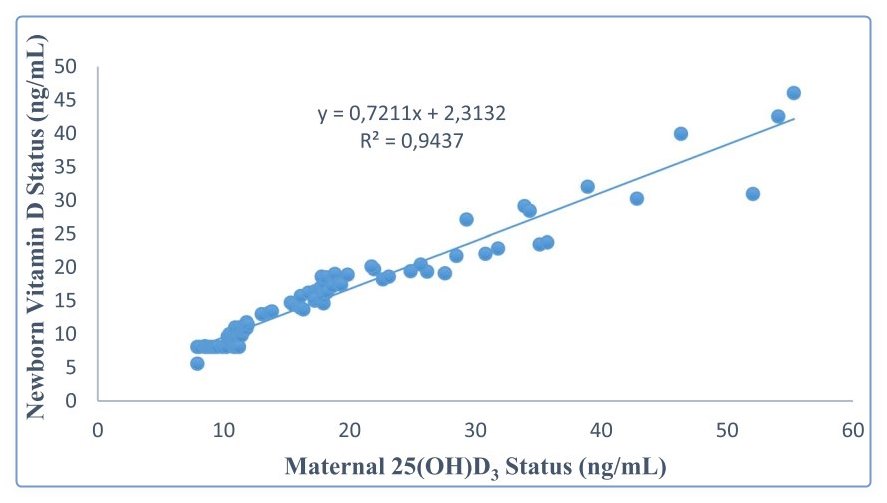Higher vitamin D level in mother results in higher level in newborn

The relationship between hematological indices as indicators of inflammation and 25-hydroxyvitamin D3 status in newborns
BMC Pediatrics volume 23, Article number: 83 (2023) https://doi.org/10.1186/s12887-023-03903-8
Yusuf Elgormus, Omer Okuyan & Hafize Uzun
Background
There is still much unknown about the relationship between hematological parameters and vitamin D status in newborns. The aim of the study is to evaluate the relationship between 25(OH)D3 (vitamin D) status and new defined systemic inflammatory markers neutrophil to lymphocyte ratio (NLR), lymphocyte to monocyte ratio (LMR), and platelet to lymphocyte ratio (PLR) in newborns.
Methods
One hundred newborns were enrolled in the study. Serum vitamin D status, below < 12 ng/mL (< 30 nmol/L) as deficient, 12–20 ng/mL (30–50 nmol/L) as insufficient, and > 20 ng/mL (> 50 nmol/L) was considered as sufficient.
Results
Parallel to maternal and newborn vitamin D status were also statistically different between the groups (p < 0.05). Moreover, there was a statistically significant difference was found between the deficient, sufficient and insufficient groups in terms of newborn hemoglobin, neutrophil, monocytes, NLR, PLT, PLR and neutrophil to monocyte ratio (NMR) (p < 0.05, in all). There was also a positive correlation between maternal and newborn vitamin D status (r = 0.975, p = 0.000). The newborn NLR were negative correlated with newborn vitamin D status (r = -0.616, p = 0.000).
Conclusions
The results of this study suggest that there may be potential new biomarkers to predict inflammation associated with the inflammatory state that may arise due to changes in NLR, LMR, and PLR in vitamin D deficiency in newborns. NLR and other hematologic indices may be non-invasive, simple, easily measurable, cost-effective markers of inflammation in newborns.
📄 Download the PDF from VitaminDWiki
